What to Plant in September
While gardens start to wind down in the northern states in September, it is the perfect time to start a garden in the southern states. However, depending on where you live, autumn is the perfect time to grow some veggies that do well in cooler weather. You may be surprised at all the vegetables, fruits, and herbs you can plant in September.
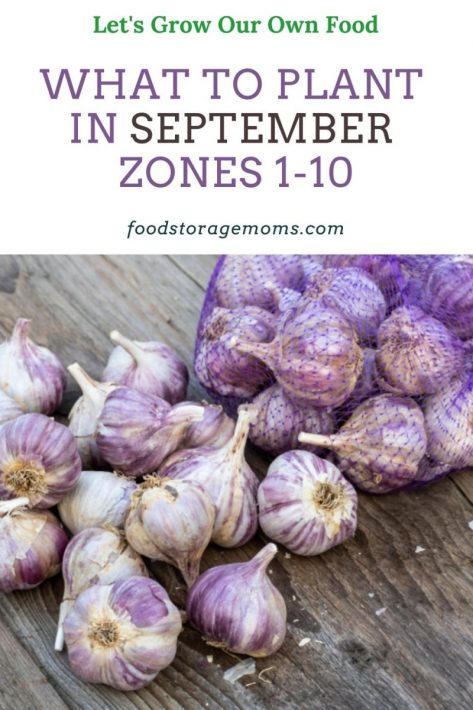
I try to update this list each year so it is as current as possible. This year food prices have shown an increase, with much of the increase due to the flood conditions in the Midwest and Southeast and the ongoing drought in the West. If you want to keep a step ahead of price increases going forward, you really should consider trying to grow more of your own food, it only makes sense. This is where I buy all of my seeds: SeedsNow
How I store my garden seeds:
Plastic Photo Container and Label Maker
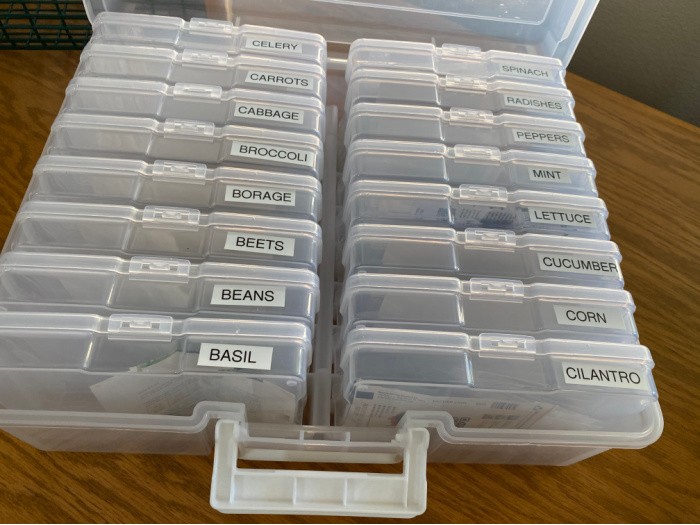
I highly recommend these products for your seedlings: CowPots and Organic Seedling Soil. This way you plant your seeds indoors and then place the CowPots in your garden when the temperatures are right.
Why Have a Fall Garden?
Planting crops in September allows you to continue growing and eating fresh healthy foods at home. Not only is this a great way to continue to eat your own food, but there are a lot of interesting cool-weather plants to try.
While you might miss your sweet peppers and tomatoes of summer, fall veggies offer you healthy, flavorful foods you can enjoy just as much or even more.
You also get a lot of benefits from your fall garden. Here are just a few you may enjoy:
- Water your plants less. With cooler temps, you won’t have to water your garden as much. This means less sweat and cost for you.
- Fewer pests. Fall offers your garden a respite from many garden pests you get in the spring and summer. That means fewer treatments to rid the garden of pests.
- Frost Sweetens some veggies. While the summer heat can make arugula and lettuce bitter, frost actually sweetens their flavors.
How to Have a Fall Garden
Almost everything that you plant in the spring can be grown in your fall garden, too. Spring-sown seeds are cool-season plants. This means they can tolerate a light frost, thrive in less light, and perform best in mild temps.
Before you can get started on your fall garden, you will want to know what the frost dates are in your region. Check here to find your zone.
What is a Frost Date?
Frost dates are defined by the day on which there is a 50/50 chance of frost. You will want your plants that are planted in September to reach maturity about 2-weeks before this date to be on the safe side.
When to Plant Your Seeds
You’ll want your plants to be at maturity before the first frost. Here is what you will need to do:
- Check the seed packet for maturity information.
- Check your region’s frost dates. You can look up the dates by zone. See the link above to save some time.
- Count back from the frost date to a suggested plant date to see when the best time to plant your garden is. Of course, this is based on how long it takes for particular plants to mature.
Give Basic Care
Just like your spring or summer garden, fall vegetables have four basic needs. These needs include:
Sunlight
You still need to make sure what you plant in September receives the right amount of sunlight. Although fall veggies can tolerate shade, you’ll want to plant them in an area where they can get quite a bit of sun as well.
Soil
No matter where you live, plants need great soil. Soil needs to be rich in nutrients and well-draining. You can improve your traditional garden with garden-specific soil. Please try adding some mulch to your soil. I buy Organic Raised Bed Mix
Water
Although you may not have to water your plants as often, you still need to water your plants consistently. A good rule of thumb is to give your plants an inch of water per week. You can use an inexpensive rain gauge to see if you need to add more water during the week.
Food
When you feel hungry, you don’t perform your best. The same is true with plants. In order for plants to flourish, whether in spring, summer, or fall, you’ll need to provide your plants with a good top-shelf fertilizer. You can also put natural ingredients such as earthworm castings, kelp, and bone meal into your garden as a needed nutrition for your plants. Quality fertilizer should be available at your local garden store. They also should be able to advise you which nutrients are best for this time of year.
Are you ready to find out what you can plant in September?
What to Plant in September
Arugula (the image below) is one of my favorite items to plant this time of year! I could eat a fresh salad every night! My dream would be to grow my tomatoes year-round. Mark and I would love to have room for a small greenhouse, but it probably isn’t in the cards.
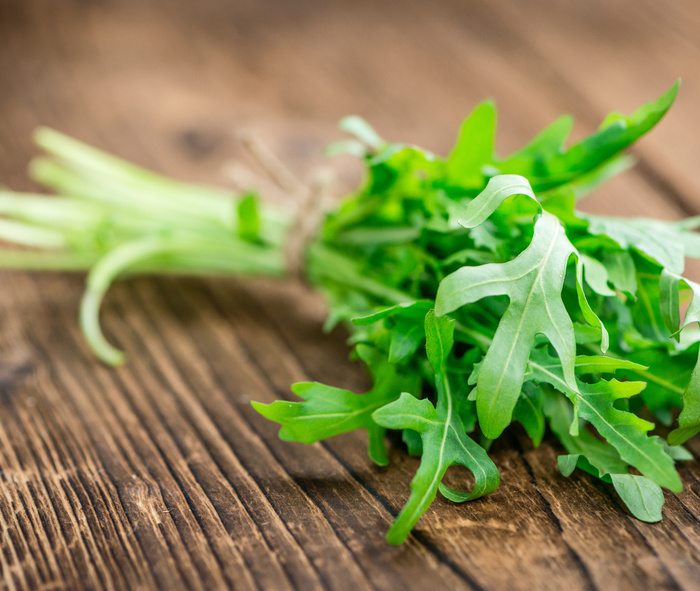
Once you have determined when your frost dates are, it is important to know what you can and can’t plant in your region. Below, you will find out what you can plant in your region/state in the month of September.
Related: What to Stock Up on In September
What to Plant in September by Zone
Please keep in mind with Climate Change, or whatever, the weather has changed in the different zones. We have droughts, flooding, hurricanes, wildfires, and tornadoes. Please follow your local weather channel for temperatures.
Zones New England Region
The New England Region of the United States is the easternmost part of the U.S. The states in this region include Maine, Rhode Island, Vermont, Connecticut, New Hampshire, and Massachusetts. This region is characterized by bitterly cold winters and semi-humid summers.
Due to the climate of this region, the vegetables that do well here in September include: (The image below is Bok Choy). In case you missed my post, Healthy Bok Choy Salad Recipe
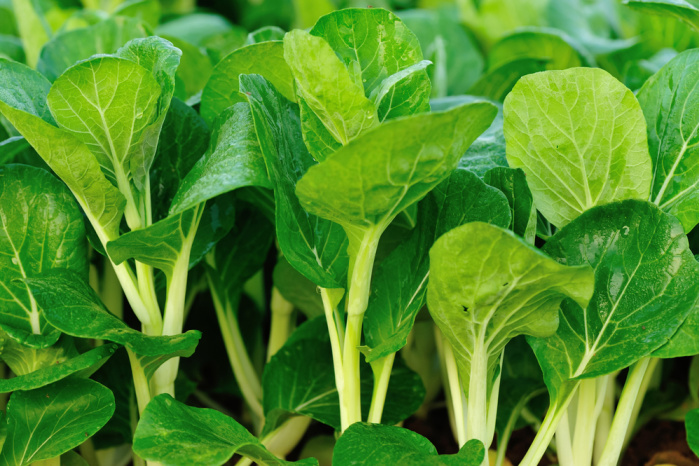
- Arugula
- Bok Choy
- Lettuce
- Mache
- Radishes
- Spinach
Zones Mid-Atlantic Region
The Mid-Atlantic region is south and west of the New England States. The states in the Mid-Atlantic are New York, New Jersey, and Pennsylvania. Although the Mid-Atlantic region is quite different than the New England region, they have common climates. Some plants to consider are:
- Arugula
- Bok Choy
- Lettuce
- Mache
- Radishes
- Spinach
Therefore, for the most part, the same vegetables that can be grown in the New England States can be grown in the Mid-Atlantic states in September.
Zones Southern Region
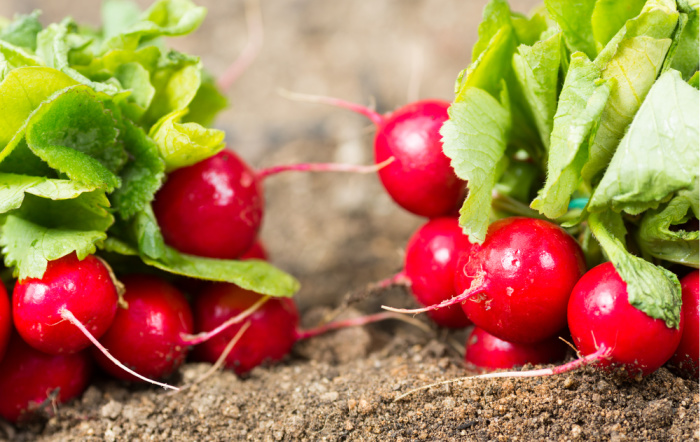
States in the southern region make up the third region of the United States. These states include Virginia, West Virginia, Kentucky, Delaware, Maryland, North and South Carolina, Tennessee, Arkansas, Louisiana, Florida, Georgia, Alabama, and Mississippi. The southern region states are characterized by humid subtropical climates that include mild winters and hot, humid summers.
In September, you will want to plant the following plants:
- Arugula
- Beets
- Bok choy
- Broccoli
- Brussels sprouts
- Carrots
- Cauliflower
- Collard greens
- Kale
- Lettuce
- Mustard greens
- Radishes
- Spinach
- Turnips
Zones Midwest Region
States in the Midwest are considered Interior Plains and part of the Interior Highlands regions. The states that encompass the Midwest region include Michigan, North and South Dakota, Iowa, Minnesota, Kansas, Nebraska, Ohio, Indiana, Illinois, Wisconsin, and Missouri. In the Midwest, you will find that temperatures can be drastically different from summer to winter, and the temperatures can vary from state to state.
Because of the inconsistency in temperatures throughout this region, you’ll want to check your frost dates by zip code. Plants that do well in September in this region include:
- Arugula
- Collard greens
- Lettuce
- Mache
- Mustard greens
- Peas
- Radishes
- Spinach
- Turnips
Zones South-West Region
Part of the Atlantic Gulf Coastal Plain, the states in the South-West region includes Texas, Arizona, New Mexico, and Oklahoma. Most of the South-West region is an arid desert climate, so, very hot and dry.
Although the climate is very hot and dry, there are still a lot of vegetables you can plant in September. If you live in this region, you can plant the following:
- Arugula
- Beets
- Bok choy
- Broccoli (transplants)
- Brussels sprouts (transplants)
- Cabbage (transplants)
- Carrots
- Cauliflower (transplants)
- Collard greens
- Kale
- Leeks
- Lettuce
- Mustard greens
- Radishes
- Spinach
- Swiss chard
- Turnips
Zones Rocky Mountains Region
This region is made up of states that run through the Rocky Mountains. States that run through the Rockies include Montana, Idaho, Colorado, Utah, Wyoming, and Nevada. The climate through the mountains becomes colder as the altitude gets higher. In some locations, the climate tends to be wetter than the surrounding flatlands.
Because temperatures can change in the mountains by the hour, we only have a few plants that can be planted in September. These include:
- Arugula
- Lettuce
- Mache
- Spinach
Zones Pacific Coastal Region
The Pacific Coastal Region is made up of the states that lie beside the Pacific Ocean. The states found in the Pacific Coastal Region are California, Oregon, and Washington. These states generally have a Mediterranean type of climate with rainy winters and dry summers.
You can plant the following in this region in September:
- Arugula
- Bok choy
- Collard greens
- Lettuce
- Mache
- Mustard greens
- Radishes
- Spinach
Perennials to Plant in September
Another option to consider when planting in September is perennial vegetables and fruits. Perennials come back year after year, which is a great option for those of us who don’t want to plant stuff every year. The cooler fall temperatures give the plants a chance to become established and take root. Perennials, such as asparagus and strawberries, can be planted in the fall and harvested in the spring.
Related: What You Need to Know About Growing Asparagus
Planting perennial herbs such as mint, thyme, oregano, sage, chives, lemon balm, lavender, and rosemary in September allows the plants to develop a good root system while avoiding heat stress. To find out if these plants are perennial in your region/zone, check here: USDA Hardiness Zone
What are you planning to plant in September? If you are worried about the cold, see if these Cloches (Plant Protectors) would work for you. A cold frame would work as well, depending on the temperatures you get in your area. Cold Frame
Greenhouse
How many of you have a greenhouse, big or small? I would love one. What do you like about it, does it work as well as you had hoped? Do you have to heat it? I know we need to place them where they get full sun.
What flowers are good to plant in September?
In September I always plant daffodils or tulips. Watch for the sales and get ready to sow those little bulbs! I dig the holes about 4-6 inches deep and place the bulbs in the holes and cover them with soil. Next spring you’ll see little green tips start to grow and pop up through your soil. My favorite daffodils are Lily Lent
Can I plant onions in September?
Typically you harvest onions in the fall and let them dry so you have onions year-round.
Can I use leaves to mulch my garden soil?
Fall is a great time to use a tiller or a shovel to mulch your leaves into your soil. They should break down by next spring. I highly recommend turning the leaves under your soil surface.
Clean Out Your Weeds
In the fall it’s a great time to clean up your yard and pull the weeds and debris leftover from your harvest.
Winter Squashes
If you planted some winter squash, you should be able to harvest it and let it cure over the winter to eat until you plant it next year. Winter squash has a thicker rind and therefore should last for several months. I’m talking about Acorn, Spaghetti, and Butternut squash. My mouth is watering right now, I love winter squash!
Please Check Out What To Plant Each Month:
- What To Plant In January
- What To Plant In February
- What To Plant In March
- What To Plant In April
- What To Plant In May
- What To Plant In June
- What To Plant In July
- What To Plant In August
- What To Plant In September
- What To Plant In October
Final Word
I hope you enjoyed today’s post on what to plant in September. There is something about digging in the earth that just makes me smile. Many gardeners don’t consider themselves as preppers, but what better way to help prepare for challenges in acquiring food than having your own garden? If you haven’t got a garden right now, consider making it part of your efforts to be self-sufficient in these challenging times.
You know when you plant those seeds, and you water them in and you wait for them to sprout, the anticipation is just fun. Life is so awesome when you start eating your harvest of healthy vegetables. May God bless this world, Linda
This is where I buy my garden seeds: SeedsNow
Copyright Images: Lettuce Growing Your Own Deposit photos_7522318_s-2019, Bok Choy Deposit photos_308249330_s-2019, Arugula Lettuce Deposit photos_130604196_s-2019, Radishes in the Garden Deposit photos_71340343_s-2019, Garlic Ready To Plant Depositphotos_225888192_s-2019

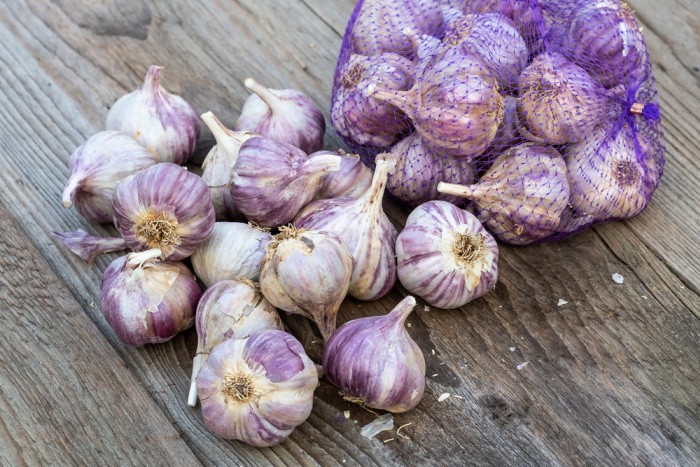

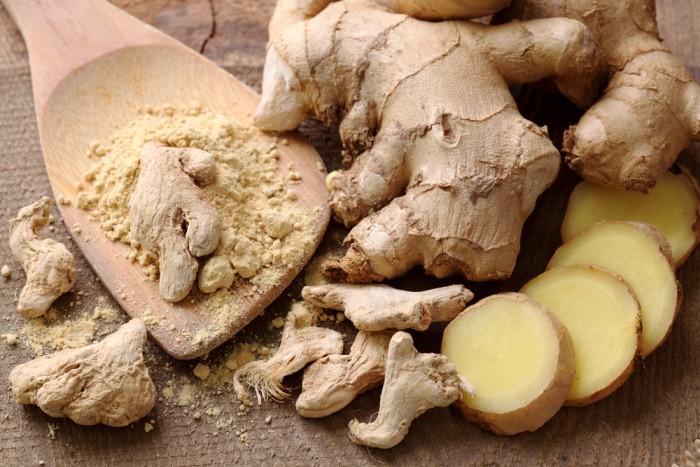

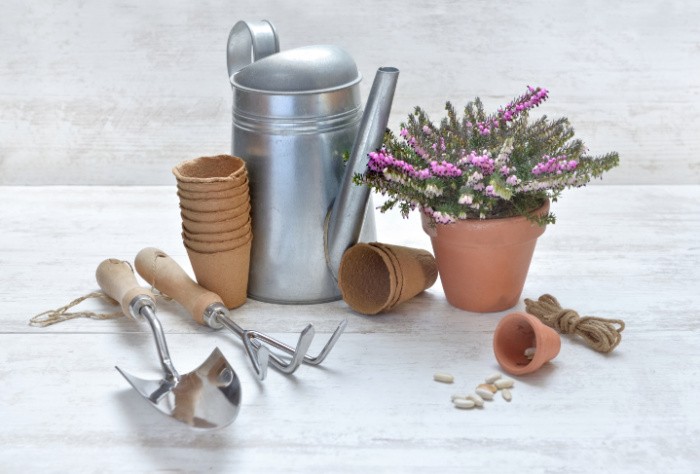
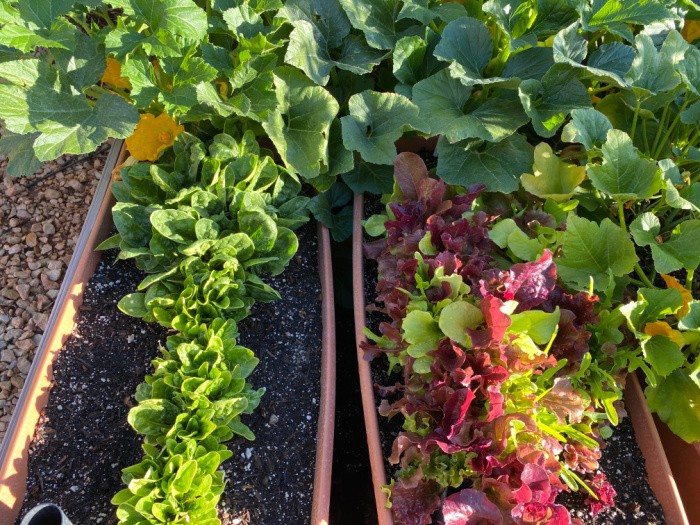
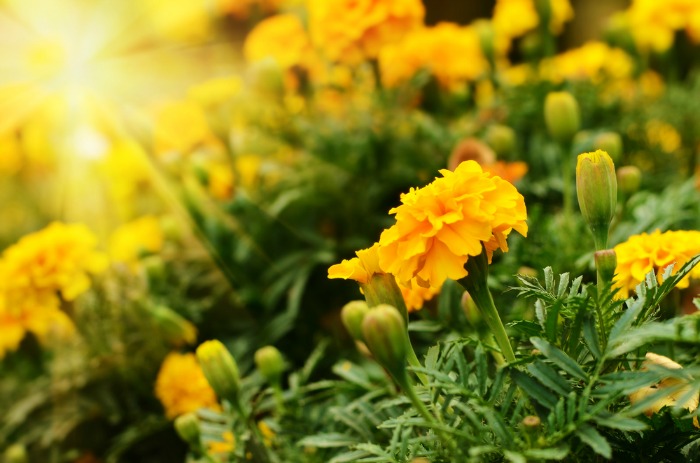
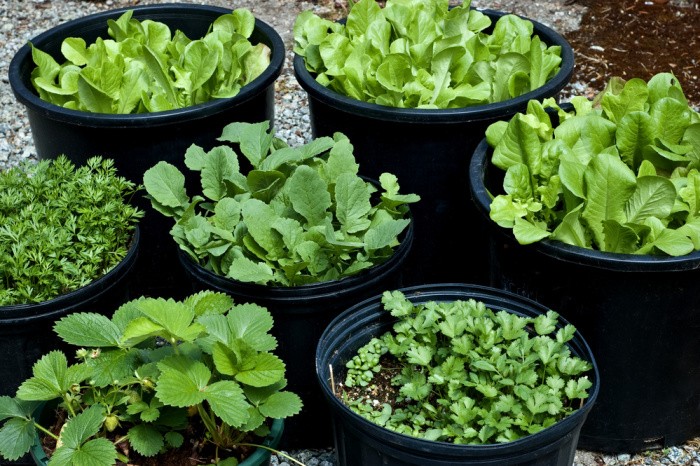
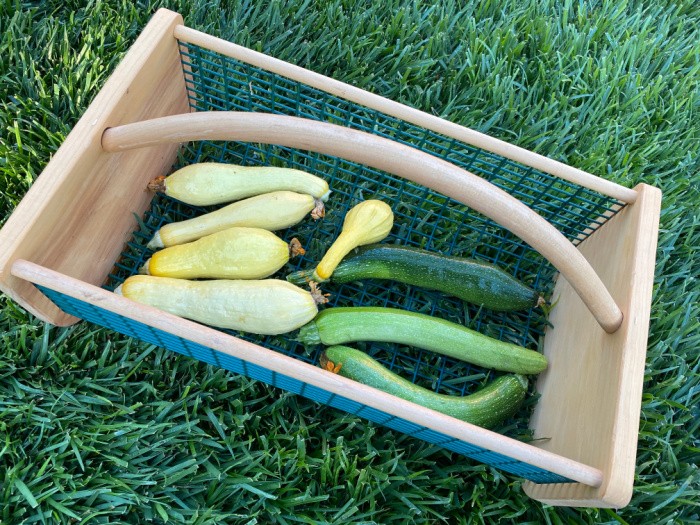
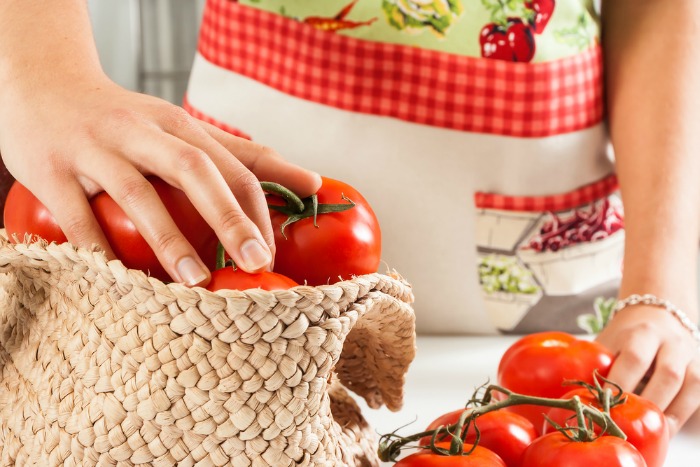
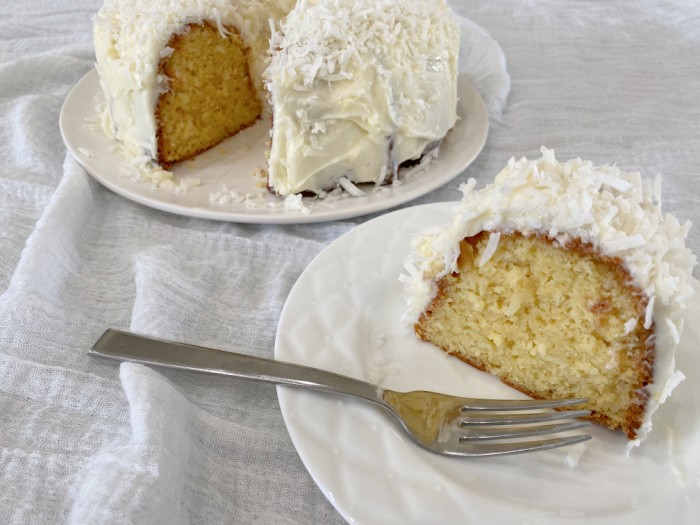
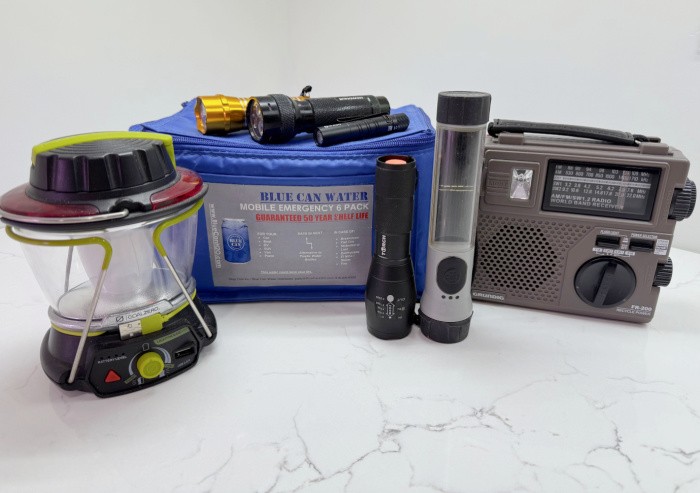
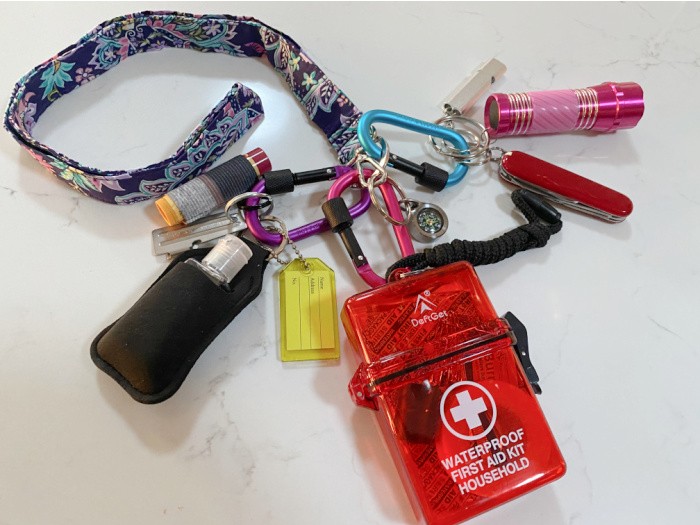






Linda, My mom always had a fall garden. Me, if I make it through the summer one I count
myself as lucky.
I do have a question: for the past 2 weeks I get another “email” from Food Storage mom.
Is that one of yours? I never know, did I sign up for it and forget it? It’s not signed like you. Am I losing
my mind or what? This weeks is titled: Can you believe it’s Friday? If it is yours forgive me for being so
crazy and forgetting but I just want to be careful before I respond to anything.
I hate getting off subject but I think of things and want to say it before I forget. We talk about
stocking up on items before an emergency but there are a few things I don’t remember seeing on any of the list to buy a few extra of, what about having a few extra bottles of perfume/ cologne ( for the men) just cause we are in a emergency doesn’t mean we don’t need to feel good about our selves.
What about make-up? ( I don’t wear it but I know a lot of people do) We have chocolate listed ( with good reason), also games to play and I thought what about just a little something to make us
feel just a little ” normal”.
Hi June, yes, that is my Friday night newsletter to remind people to prep! I totally understand the statement, did I sign up for something??? It’s a friendly reminder to my awesome readers to be prepared. Perfume and cologne would be awesome. I have a girl send it out for me, I’m not very techy. I asked her to remove the statement respond to me on that newsletter. Hugs, Linda
You only listed Texas as zone 6-7 southwest gulf coast.i live in Houston Metro area.we are zones 8 and 9. Texas goes all the way to zone 10 down by Brownsville. I was disappointed not to see these areas.
Hi Debra, thanks for letting me know. Linda
I was just thinking about some of the non necessities, that we should include in our prep. Perfumes and colognes are a definite, especially if we are isolated at home! I know there are cheaper candles to be had, but for me, it is large jar candles from Yankee Candle, hand soaps and sanitizers from Bath and Body Works, and chocolates from Lindt. There has to be some pleasures to be had!!
Hi Chris, chocolate is essential!! I say whatever item(s) makes us happy, add them NOW! We may not be able to get them next week! Bring on your favorite candles, I will grab ore M & M’s! Life is good! Linda
I like you website. Thank you for all the information you share!
I was looking at your “What to plant in September” section for California and wanted to make a little comment. Most of those things that you listed are great for the coastal regions. However,California is made of of 3-4 different climates. The Central Valley of California is more like Arizona or Texas. We can’t plant our “winter garden” (what most people call their Spring garden) until the middle of October. Then we can plant peas, broccoli, cauliflower, carrots, radishes, kale, etc. It’s little more complicated than Oregon or Washington. Thanks again for all you do!!!
Hi Robin, oh I’m so glad you told me this! I had no idea that the Central Valley of California has 3-4 different climates!! I love California by the way! I have a daughter that lives in Southern California and she has the most beautiful flowers! Thanks for letting me know! Linda
Linda, the link to the August planting in this series seems to be broken. When I clicked on it, it was a repeat of the March planting article. Could you please fix this? Thank you!
Hu Wolphene, thanks for letting me know, I fixed it. https://www.foodstoragemoms.com/plant-in-august/ Linda
Robin:
Where can I find the Planting guides for February, November and December. This has been one merry go round in our lives this year. From the middle of June my husband was in the hospital and then things just went on from there culminating in our sons Wedding on Nov. 2. (the only good thing that happened that whole crazy half year.)
I would also like to find the What to stock up on in December. I did some thing right this year by getting all those except December.
Thank you so much for your help
With the Love of YESHUA JESUS
A JEW 4 JESUS
ROMANS 1;16
Hi Jackie, oh I’m so sorry about your sweet husband, I hope he’s doing better. Oh my, having your son get married is such a blessing!! I have written about all 12 months “What To Stock Up On”. Plus, I am in the middle of “What To Plant In February”. So, I have 12 months on “stocking up” and will have all 12 months on “what to plant” every single month. Let me grab the December stocking up post link for you. https://www.foodstoragemoms.com/what-to-stock-up-on-in-december/ I’m actually adding all the zones as fast as I can. Watch for the February post “What To Plant In February” coming soon. All the months will be put in each post for you. Have fun gardening my friend, Linda
Linda:
Thank you so much for sending the December “What to stock up on” link. I now have all the links for that. I love all your articles but being 69 I can only stay on the computer for a short time each day and it does not let me get everything I want. My husband and I are both Veterans and I must say I really respect the Men and Women who are in there today. We will celebrate our 50th Anniversary of our Betrothal (a Jewish ceremony where although you don’t see each other for a year or talk to each other you are considered married. That was to protect the women in biblical times because they would have been left with nothing if there betrothed did within that year. That will be in July and we celebrate our 49th Civil wedding anniversary April 3rd. So we get to celebrate twice. We don’t do much because both of our health is not good but it is simple with our kids.
Love
Jackie
Hi Jackie, oh thank you for sharing your Wedding and Betrothal story. I LOVE LOVE LOVE hearing about it. Thanks to you and your husband for serving our country. My husband and I were married for 50 years this past July. It’s so fun to hear about others who have married or betrothed for 50 years. It’s amazing! We drove up north to enjoy the celebration with our kids and grandkids. We ordered (takeout) Chinese food from our favorite restaurant and served it in the cartons (no cleanup). The restaurant couldn’t seat 35 people all at once. It worked out great having the “party” at my daughter’s home. Simple and delightful. It’s all about family, right? Let me know if you need any article links anytime. I will get them for you! Happy New Year, girlfriend! Love, Linda
Hi, I live in Colorado and though we are part of the Rockies, our state is also part of the Southwest. I garden zone 6a whilst my friends up north garden in a different zone. And across the mountains they have different zones. Crazy Colorado! That’s why we say Mother Nature in Colorado always says, “Hold my beer!!”
Great article. Keep them coming.
Hi Marisol, “hold my beer”, now I have the giggles! The weather can change when we least expect it! Linda
Linda, I even plant bush beans in September. The cooler weather is easier on them than our intense summers and with an “average” first frost date of Nov 15 and by using row covers if necessary I usually get a good crop. It is often better than my summer crop, what with fewer insect and disease problems due to less stress on the plants. I often plan a fall crop of peas as well. I just sent out my monthly Dying Time Newsletter (Volume 66) titled Planning and Planting Your Fall Garden and the Importance of Journaling. You can sign up for it–it’s free–on my website listed below.
Hi Ray, oh awesome!! I love fresh green beans and they are so easy to grow!! Linda
Ray, I’d like to know your website address. If it’s OK with Linda to post it.
Deborah,
Thanks for the inquiry. I always enjoy your posts. My website address is https://raymonddeanwhite.com/ and if you click on the Free Prepper Info link it takes you to a page that has all of my archived Newsletter Articles on it. You can also sign up for my free monthly newsletter on my site. It is a secure site but for some reason my webmaster still hasn’t gotten around to putting the secure site sticker on it. I’m getting onto her about that.
You’ll note Linda’s site is featured prominently on my landing page.
Thank you so much, Ray. Your site is awesome! Very informative.
Thanks Deborah, I’m working on getting the Newsletter Archives re-done so that the Newsletter Title is shown instead of just the Volume Number. We’ll see how that goes.
Oh, and I just checked in with my hosting service and they said my SSL was valid but then I got cut off before they could explain WHY my URL didn’t come up with the https address instead of the regular http. Competence is SO hard to find these days.
Hi Ray, it’s working now!!! https://raymonddeanwhite.com/ SQUEAL!! I LOVE IT!! LINDA
Hi Ray, you are so good to me, thank you for sharing my website, my friend, Linda
Hi Deborah, yes it is for sure!! I changed out his http to the https (It’s working Ray!!!)
Linda,
Most all of Arizona is in Zones 8-9. Only the high mountain areas get significant winters. So most Arizonans can grow any plant that can handle the shorter daylight hours of winter. Where I live we rarely get frost, snowfall or hard freezes. They happen, but simply covering my hoop houses with plastic handles all those problems. I’m planting carrots, broccoli, lettuce, spinach, shell peas, snow peas and garlic (interplanted with the broccoli) this month. I should be harvesting the shell and edible pod peas beginning in November and continuing through Spring. This year I planted Johnny’s Premium Shell peas instead of the Green Arrow shell peas I normally plant. I like to experiment with new varieties.
My Sweet 100 cherry tomatoes are outproducing my ability to keep up with them now that temps have dropped into the high 90’s. The Peacevine (OP variety of Sweet 100) weren’t very productive this year, but it looks like their productivity is starting to pick up with “cooler” weather. I’m hoping they’ll shine in October and November.
Hi Ray, oh my gosh, I love hearing this about what you are planting! You can always use your blender to pulverize the cherry tomatoes skins and all for soup. Yes, you have to freeze it, but use it first. Linda
Linda,
So do you have a good tomato soup recipe? My wife and I both like tomato soup served with grilled cheese sandwiches.
I’m off to a 911 memorial service now. I’ll never forget 911, but the day I really miss is 9/12. All Americans came together then. Didn’t matter if you were liberal, conservative, gay, straight, Republican or Democrat, we all pulled together. Stores ran out of American Flags because everyone was buying them and flying them. Yes, I miss 9/12 and wish we could recapture that feeling–without having to be attacked first.
Hi Ray, no I don’t!! I make Campbell’s Tomato Soup with a 1/2 can of milk! Lazy here! LOL! I agree 9/12 brought Americans together. Great comment! Linda
Linda,
That’s how Jane and I make it too.
Hi Ray, it sounds like you and I need to come up with a good tomato soup from scratch!! LOL! Linda
I planted 3 potatoes that were growing on the counter bout 2 weeks ago. Who knows if they’ll make or not lol. We had an ice storm last October while the leaves were still on the trees that wiped everything out and some years I’ve hunted in a t-shirt in November.
Falls just too busy with hunting, wood cutting and projects I just don’t wanna do when it’s 100 degrees to plant much. One of those projects is to break new ground on an expanded garden though.
Hi Matt, that’s cool about the potatoes on the counter. Crazy weather the last few years! Good luck hunting! You know I love hearing this! Linda
Linda, I’ve been stocking up on seeds while they are still available so I clicked on your Seeds Now link and found some seeds I’ve been looking for–alfalfa, broccoli and clover sprouts, Detroit Dark Red beets, Corn Salad, and one of my all time favorite carrots, Kuroda.
I’ve had to go to at least half a dozen places to find the seeds I want to stock up on. Even though I save seeds from many heirloom varieties, I think you can’t have too many seeds. I’m still looking for the Purple Queen Garlic I love–made the mistake of digging it all up last year and not saving any for this year. Won’t do that again.
While the few summer crops I planted are still doing well I’ve started my fall garden. First I planted a final crop of Dragon Tongue Bush beans, which, yes, I still have plenty of time to get a decent bean crop in before any hard freezes or frosts. Just six days ago I planted Pak Choi in a large pot and it’s up and thriving already. Four days ago i planted Crispino and Jericho lettuces in separate large pots. I finished up two days ago by planting Calabrese Broccoli in a large pot.
Later this month I’ll be planting more lettuce, carrots, beets, chard, shell peas, snow peas, broccoli and so on in my garden beds. And I’ve ordered Covington Sweet Potato slips for next Spring. They’ll ship in February or early March.
People should be planting survival gardens now and next year–with a strong focus on high carb, high calorie, highly nutritious crops like potatoes, sweet potatoes, beans and peas. I usually don’t mess with ordering seed potatoes–I just use the Russet Burbanks or Kennebecs I get at the store. I need to make my potato beds much deeper before I replant them next February. They are only 12″ deep now and they need to be at least 24″ deep to maximize production.
I always enjoy your What To Plant articles. You give great advice. I hope you get some benefit from me using your Seeds Now link before ordering from them.
Hi Ray, thank you, my friend, yes I make a little money when people order seeds from that link. You know I love hearing about your garden. You just put out a great post on all of your favorite garden seeds! I loved it! Linda
Hi, I just want to say that Wyoming includes Zone 4b, which is where I live. I have tomatoes and potatoes growing since May. My July 27 – September 5 plantings have been wax beans, bush beans, sweet peppers, chard, cilantro, cucumber, snap peas, purslane, green bunching onion, parsley, and basil. I do not have a yard or garden space, so everything is in a pot or other container, and I constructed a make-shift greenhouse out of 2mil clear plastic drop cloths, poles/long branches, and burlap shade cloth. The sun is intense and we are in the low 90s again this week, the wind is ever-present and can easily be over 24mph, and we have a herd of mule deer in town, so protecting the garden is imperative. We’re in the low 50s at night already, which is why the beans and peas are growing. I anticipate several plants needing to finish indoors, under grow lights, because my first frost date could be as soon as Sept. 26. I’m waiting for daytime temps to be under 80F before I start any lettuces, arugula, and kale. I will try to grow these last 3 indoors throughout the winter — wish me luck!
HI Mary-Ann A., oh how I love hearing how people are growing their own food. You have gardens in pots and you made your own greenhouse!!!!! Boy, your first frost is coming up!! I love hearing what you planted, it brings me so much joy! Thank you for sharing! Linda
I tried again and it still didn’t work. I changed the URL where March was replaced with August. That worked! Might be useful for anyone else having this problem. Thanks!
HI Wolphene, thank you for checking it, I better check it again. Darn, Linda
Linda:
I aged some since my last post on this subject. Instead of being 69 I am now on my way to 73. My question for you this time is where can I get the purple garlic you showed in your picture of Garlic. I don’t have a lot of space but I am hoping that if I put garlic out my neighbors cows won’t want to take anything I plant. or if they do then they can get a good bellyache and I don’t think the neighbors will like garlic tasting milk and they may keep them fenced in. LOL but not sure it will help.
Hi Jackie, I wish I could help you, I only buy two different kinds of garlic to plant and they are cream colored. I’m not sure where you can get the purple kind. Linda
Linda,
2024’s summer garden was a big disappointment this year. A too cool for too long Spring was great for my Winter/Spring crops like Broccoli, Bok Choi, Peas, Carrots, Lettuce and Cabbage, but delayed the planting of my warm weather varieties so long that our intense summer heat hit them hard and shut down production.
I did get several tomatoes, but no melons, no corn, and until last week no beans. It was so hot and windy for so long that, despite frequent watering, my pole beans withered and died as did several of my tomato and squash plants. My watermelons and cantaloupe grew well–long vines and lots of leaves, but no flowers. I’ll add more phosphorous to the soil this fall to try and remedy that for next year. My normally dependable Hopi Pale Gray squash is finally blooming, so I should get some of that. It’s very tasty and is the best long term storage squash I’ve ever grown.
Next week I’ll put in more beans and a few zucchini. By the end of September, or possibly early October, I’ll have my cold weather crops in. Because our winters are so mild my gardens are usually very productive all winter long.
Here’s hoping you’ll be able to get a garden in next Spring.
Oh, I have a new Facebook page for promoting my books and where I’m going to post my Newsletter Articles (haven’t got that done yet). With your permission I’ll also repost your articles and a link to this site on it.
Hi Ray, wow what a shame, the weather is so unpredictable! When you get your FaceBook page up and running you can use anything off my website, let me know when it goes live. But I will promote your page as well. Yours books are the best! Linda
Linda, my new facebook page is up and running, but it needs a lot of work. I have posted your site’s link on it already.
https://www.facebook.com/profile.php?id=61563550119917
Hi Ray, I just “Likes” so I’m following you now. Great idea, thank you for sharing my post. I will share your books as well. Linda
Thank you, Linda.